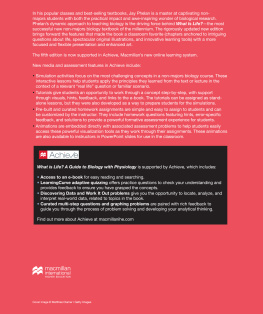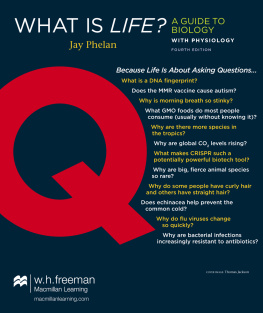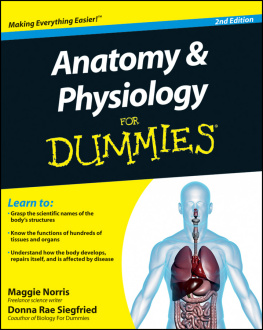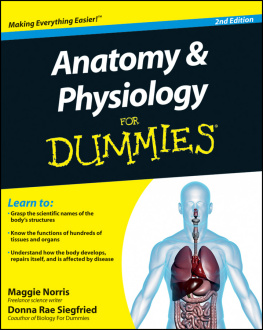Contents
Landmarks
List of Figures
Page List
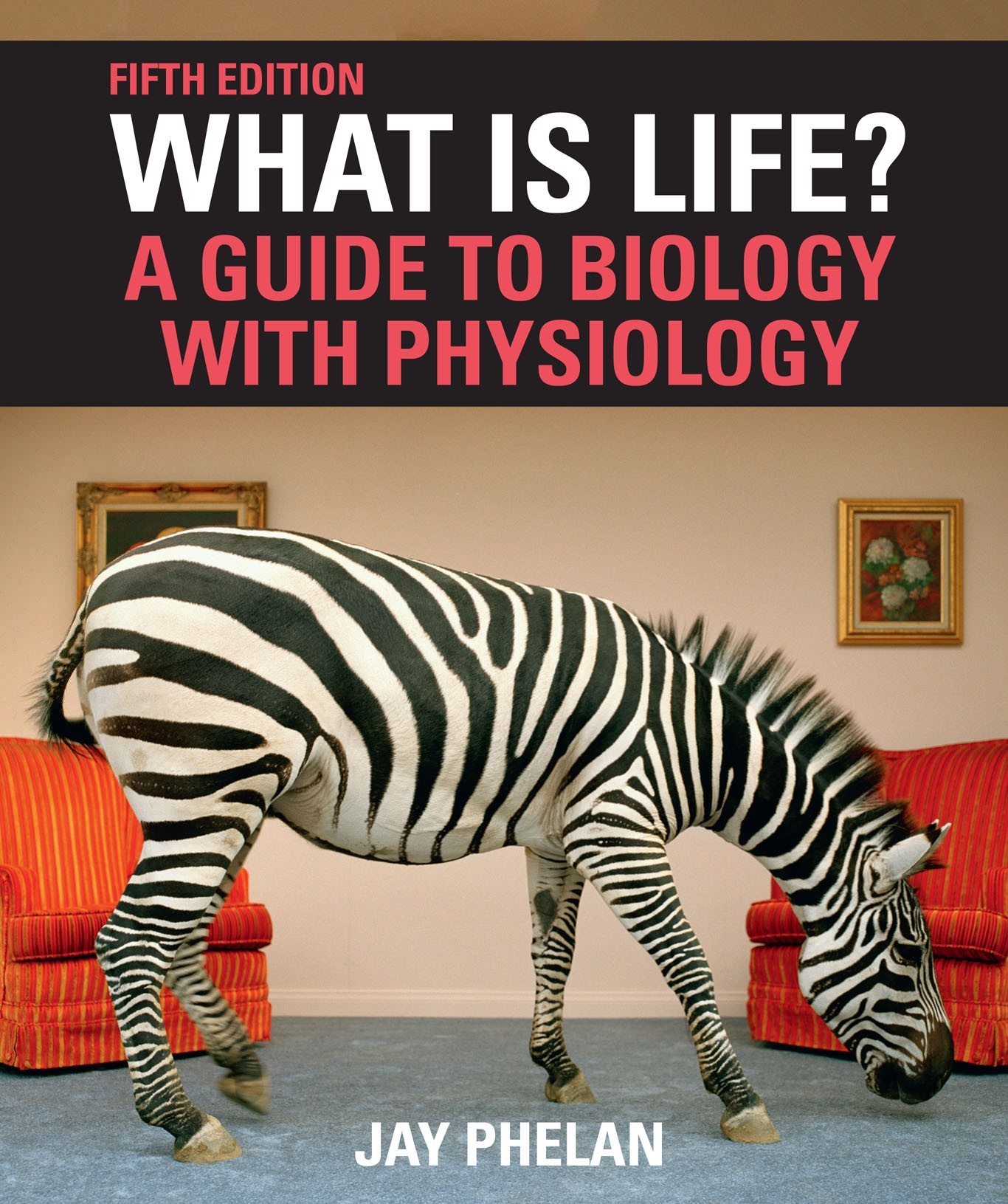
The front cover shows a zebra inside the living room of a house.
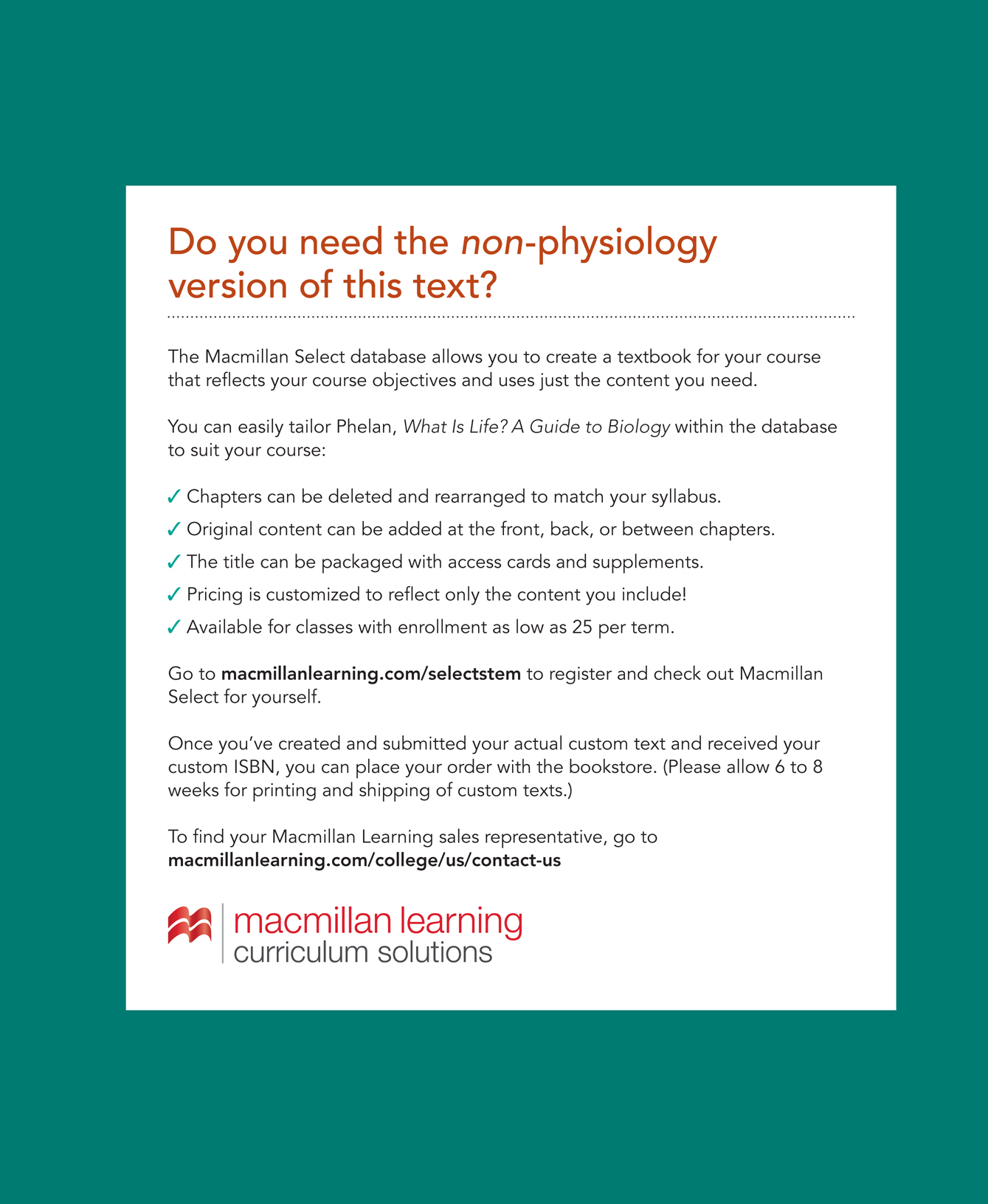
What is Life?
A Guide to Biology with Physiology
What is Life?
A Guide to Biology with Physiology
FIFTH EDITION
- Jay Phelan
- UNIVERSITY OF CALIFORNIA, LOS ANGELES

Senior Vice President, STEM: Daryl Fox
Executive Program Director: Sandy Lindelof
Program Manager: Shannon Howard
Executive Marketing Manager: Will Moore
Executive Content Development Manager, STEM: Debbie Hardin
Development Editors: Jennifer Angel, Debbie Hardin
Executive Project Manager, Content, STEM: Katrina Mangold
Editorial Project Manager: Michele Mangelli
Director of Content, Life Sciences: Jennifer Driscoll Hollis
Media Editors: Jennifer Compton, Mary Tibbetts
Editorial Assistant: Casey Blanchard
Marketing Assistant: Morgan Psiuk
Director of Content Management Enhancement: Tracey Kuehn
Senior Managing Editor: Lisa Kinne
Senior Content Project Manager: Peter Jacoby
Workflow Project Manager: Paul Rohloff
Director of Design, Content Management: Diana Blume
Design Services Manager: Natasha Wolfe
Cover Design: Laura de Grasse
Text Designer: Lisa Buckley
Art Manager: Janice Donnola
Illustrations: Tommy Moorman
Director of Digital Production: Keri deManigold
Executive Media Project Manager: Chris Efstratiou
Media Permissions Manager: Christine Buese
Photo Editors: Julia Phelan; Richard Fox, Lumina Datamatics, Inc.
Composition: Lumina Datamatics, Inc.
ISBN-13: 978-1-319-38378-7 (ePub)
2021, 2018, 2015, 2013 by W. H. Freeman and Company
All rights reserved.
1 2 3 4 5 6 25 24 23 22 21 20
Macmillan Learning
One New York Plaza
Suite 4600
New York, NY 10004-1562
www.macmillanlearning.com
Dear Reader,
How many days do you wake up to breaking news about a scary-sounding virus, or a potential cause of cancer, or newly identified genes that make you better at math? In a world of easy access to information, it can be difficult to know how much confidence we should have in such reports. My mission is to help you evaluate the sometimes conflicting messages about science topics and science-related issues. In addition, I hope you will understand that biology is about you, and it touches every aspect of your life. Its creative. And its fun.
In these pages, youll find an overview of the key themes in biology as well as detailed information about the natural world and its processes. I hope you will find answers to questions youre curious about and will be spurred to ask many more. Youll also find many red Q questions, such as:
- Does echinacea help fight colds?
- If humans are so much more complex than onions, how come we have less DNA?
- Survival of the fittest is a misleading expression. Why?
- Why do some people have curly hair and others have straight hair?
The red Q s point toward passages that help uncover the answers. Often, the answer may not be apparentbut look again and think some more.
Within each chapter of What Is Life? youll find a section called This Is How We Do It. In these sections we explore the diverse ways that scientists approach problems and how they go about finding answers. Example topics include Why do zebras have stripes? and Is the carbon dioxide exhaled from your classmates making your brain duller? and How can we determine whether GMOs are safe?
At the end of each chapter, youll find a section called Street Bio: Using Evidence to Guide Decision Making in Our Own Lives. These sections address issues that are particularly practical, such as Bottled water or tap water? and Wi-Fi radiation risks: is your lap a safe place for a computer?
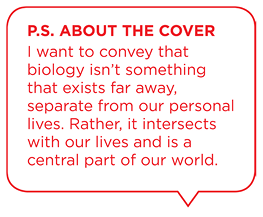
Theres much more to biology than just words. Flip through What Is Life? and look at the photographs. Images can inspire and provide an alternative hook for remembering and understanding concepts. They can also challenge you to see ideas in new ways.
Youll also notice brief quotes from a variety of literary sources. It is my hope that as your scientific literacy increases, your experience and appreciation of literature also will be richer.
In organizing each chapter, I have broken down the topics into discrete, manageable sections. And at the end of each, I provide a Take Home Message that highlights and reinforces the sections most important ideas.
Included at the end of each chapter are summaries as well as multiple-choice and short-answer review questions, plus a skills practice called Graphic Content. This critical thinking challenge will help you become adept at reading and analyzing visual displays of information, while identifying subtle assumptions, biases, and even manipulations. Youll also find many opportunities for discussion and collaborative learning, including Think, Pair, Share activities in every chapter.
This is just a sample of some of the features in What Is Life? I hope that you find this book stimulates new ways of thinking about and understanding the world.
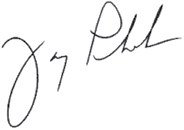
What is Life?
A Guide to Biology with Physiology
Fifth Edition

IN HIS POPULAR classes and best-selling textbooks, Jay Phelan is a master at captivating non-majors students with both the practical impact and awe-inspiring wonder of biological research. He also knows how to use the study of biology as a context for developing the critical thinking skills and scientific literacy students can draw on through college and beyond.
Phelans dynamic approach to teaching biology is the driving force behind What Is Life? The rigorously updated new edition brings forward the features that made the book a classroom favorite (chapters anchored to intriguing questions about life, spectacular original illustrations, and innovative learning tools) with a more focused and flexible presentation and enhanced art.
About the Author

Jay Phelan is on the faculty of the UCLA Department of Life Sciences Core Education, where he has taught introductory biology in large classes for majors and non-majors for 20 years. He received his PhD in evolutionary biology from Harvard in 1995, and his masters and bachelors degrees from Yale and UCLA. His primary area of research is evolutionary genetics, and his original research has been published in

